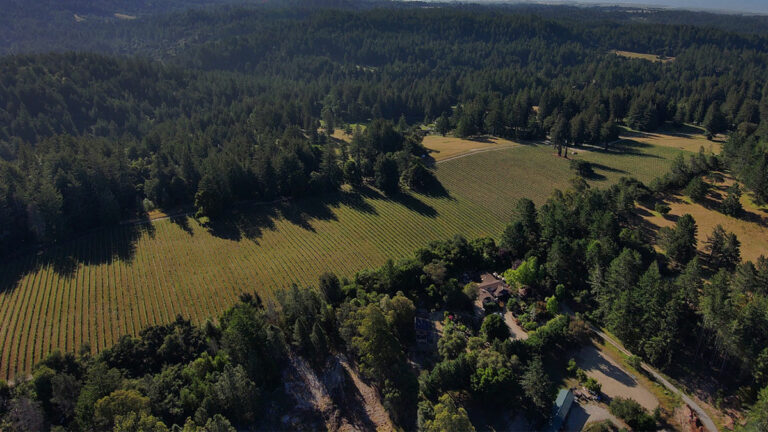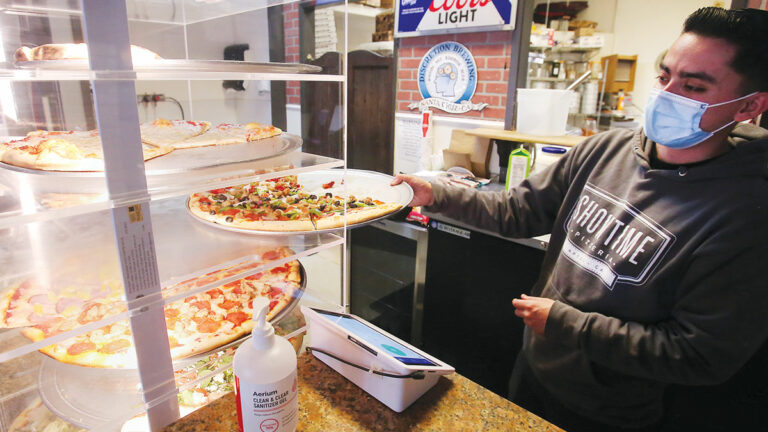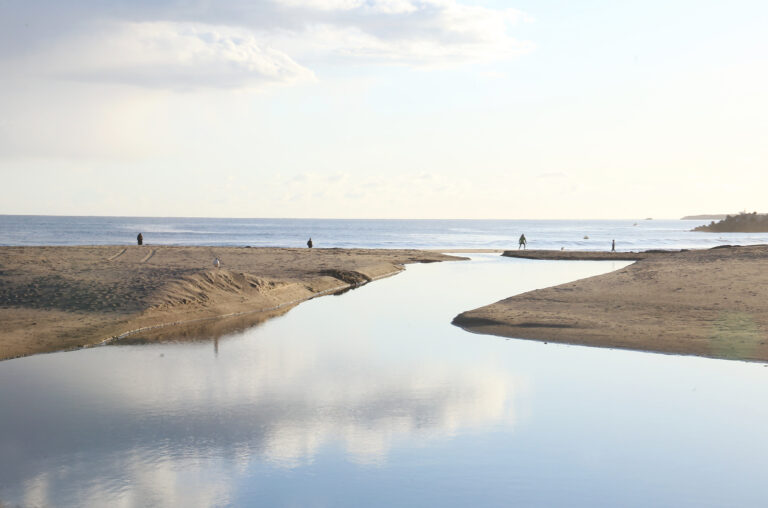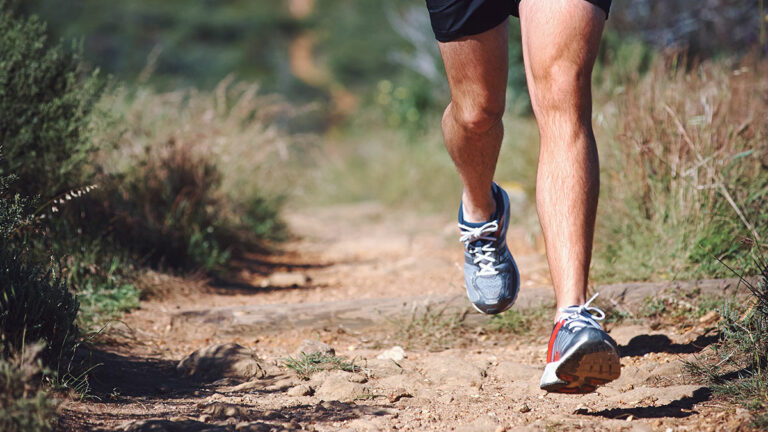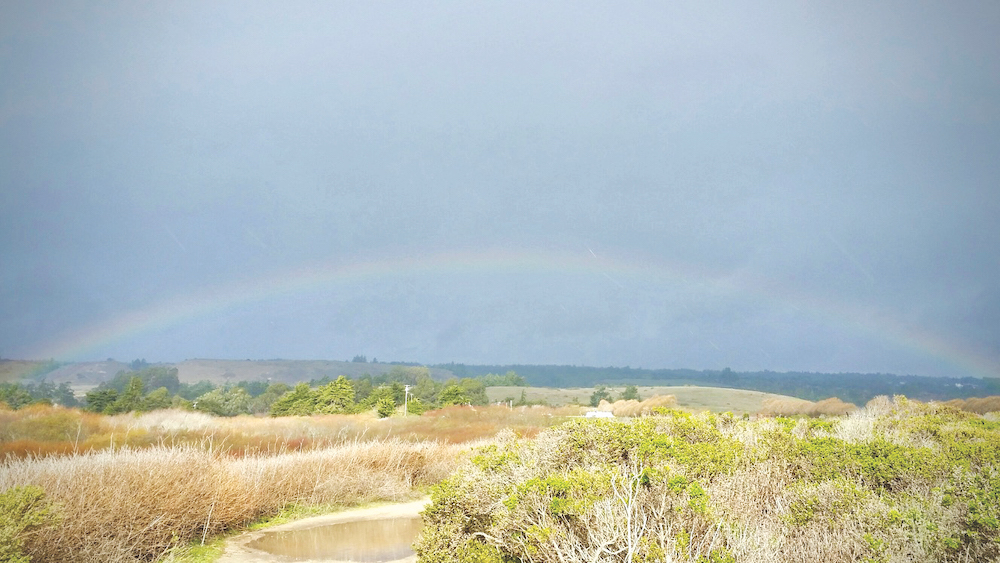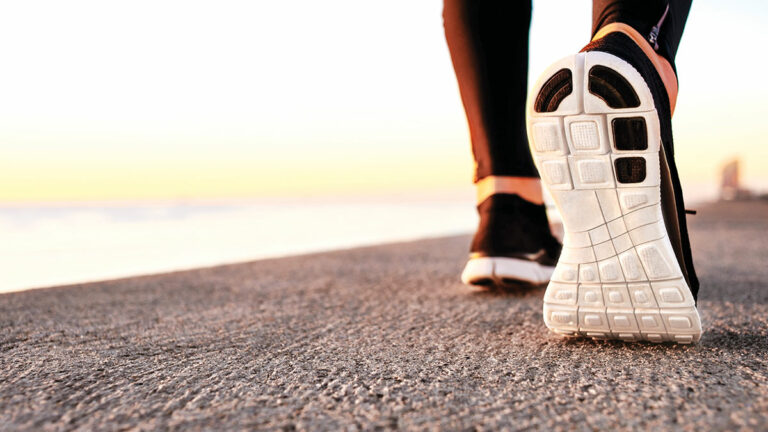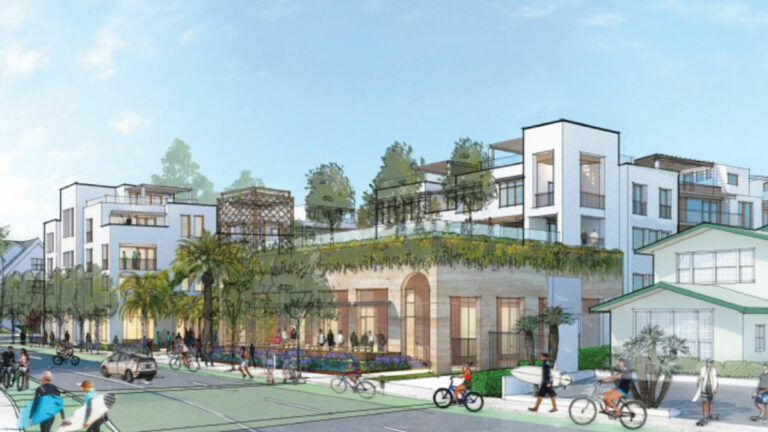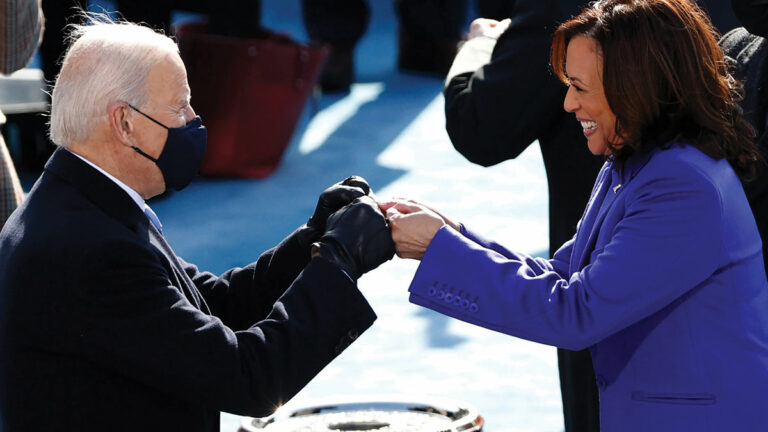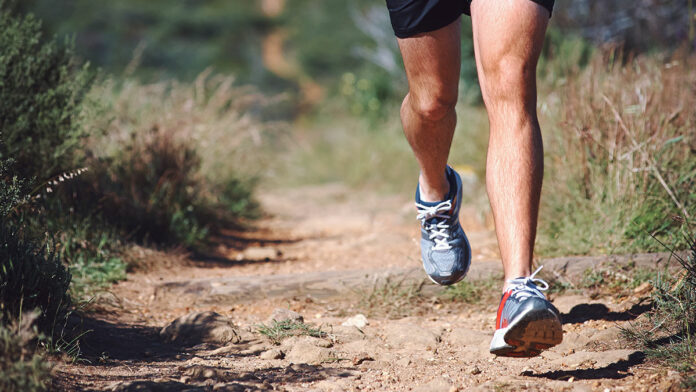If our lives have been defined by Covid-19 over the last year, our health has been defined by what’s become known as “Covid-15”—a joking reference to the pounds that many people have put on while living with quarantine, working from home and generally social distancing since last March.
But for Iraj Zarrinnaal of San Jose, it’s more like Covid-13.1—as in 13.1 miles—considering the number of half-marathons he ran last year. Zarrinnaal did 28 in all, including 17 consecutive weekends of them, on his way to running a total of 2,020 miles in 2020.
Zarrinnaal says he “by no means” considers himself an elite runner. But during the pandemic, his running went absolutely nuts. He usually does about five half-marathons per year, and before March, he hadn’t planned on more than quintupling that number, or on running 48 miles per week for the rest of 2020. But like everyone else, his extracurricular schedule during quarantine centered around outdoor activity—because what else was there for any of us to do?—and gradually his goals started getting a lot more ambitious.
“I thought, ‘What I’ll do is run a few 10Ks a week, a long run on Saturday, and do three or four days of not running—maybe hiking or walking,” he says. “That’s the plan that started forming.”
A cancer survivor he met in Team in Training, which organizes running groups to raise funds for the Leukemia and Lymphoma Society, had a goal of running a half-marathon every week, and Zarrinnaal decided he’d join in on a “few” of those. He did the “California 500” Challenge dreamed up for pandemic running by J.T. Service of Run Local Bay Area, which produces the Silicon Valley Half Marathon, the East Bay 510, and the San Francisco Across the Bay 12K and 415K: 500 miles between June 8 and Sept. 7. He went out with friends on 25K trail runs, despite the fact that he’d never been a trail runner himself. In addition to his own half-marathons, he paced other members of his running groups who had qualified for the Boston Marathon, New York Marathon and more—running half their courses.
After March, none of these races were the kind runners were used to, pre-pandemic; from the huge marathons down to Santa Cruz’s venerable Wharf to Wharf 10K, nearly every annual race that wasn’t cancelled became a “virtual run,” usually meaning that participants set their own course and run it within a certain calendar window, submitting the results from their smart watches and running apps to race organizers. The in-person events featuring dozens, hundreds or even thousands of runners crowding the streets, waiting for the starting gun, have all but disappeared over the last 10 months. Here in the Bay Area, where Covid-19 safety regulations have been particularly strict, they are not likely to return until—well, no one has any idea when, other than a vague notion that eventually enough people will have received the vaccine that popular races won’t seem like superspreader events waiting to happen.
But that has done nothing to dampen the enthusiasm for running—in fact, the pandemic has been a boom time for the sport. And it’s not just longtime runners pushing themselves beyond what they thought possible. A combination of the need for a low-risk excuse to get out of the house and a growing understanding of the health benefits of outdoor activity during the pandemic has led to the increased popularity of everything from walking to hiking to cycling—and a huge new crop of runners.
Lacing Up
Hal Higdon, a contributing editor to Runner’s World magazine and one of the country’s foremost running gurus thanks to his book Marathon: The Ultimate Training Guide, was surprised by these developments last year, at least as far as they pertained to the custom training plans he offers on his app Run With Hal, which are focused specifically on helping runners train for their goal distances.
“We had an uptick in the number of people buying my training programs,” he tells me. “Normally I would have expected there to be a pretty significant drop in sales, because there weren’t any races to train for. I guess we just happened to have a product that was good for people if you’re just training for the pure joy of running itself.”
In the small community he lives in near Lake Michigan, he says he first noticed the new influx of runners last summer. “It seemed like the pandemic doubled the number of runners on Lake Shore Drive this summer; new runners who used the sport to keep from going crazy while stuck at home,” he says. “Not merely on the weekends, when there’s usually a lot of foot traffic and bike traffic, but also in the middle of the week, when people are usually working.”
In Santa Cruz, all you have to do is look around West Cliff Drive, Forest of Nisene Marks State Park, or pretty much anywhere else to see it, says Diane Delucchi, vice-president of the Santa Cruz Track Club.
“I’ve seen a lot more people running. I’ve noticed it in the parks, and even on the streets and beaches,” she says.
The hard data is just starting to be collected on this running surge, but it would seem to bear out the anecdotal evidence. In April of last year, just after the pandemic began to shut things down, the running app Runkeeper reported a 252% increase in registrations and a 44% increase in monthly active users compared to 2019, as well as a 62% spike around the world in people heading out for a weekly run.
Meanwhile, running shoe company ASICS did a study in June that revealed that 62% of those who had taken up running during the pandemic planned to stick with it in the future. The study, which interviewed 14,000 subjects in 12 countries, found that 79% of runners said their running was helping them “feel saner and more in control” during the pandemic, 65% of runners said it provides them more mental benefits than any other form of physical exercise, and 73% of runners plan to keep running as much as they are now after the pandemic ends.
For Zarrinnaal, the proof of the new dedication to running is even simpler than that. “When I get up at 5am to go to a 6am run, I look out the window and I see people running in the neighborhood in the dark,” he says. “Those people weren’t there before the pandemic.”
Building Immunity
The health benefits of running during the pandemic may go well beyond the mental benefits that the runners in ASICS’ study perceived—and even beyond the typical physical benefits we associate with getting in shape. In an article published last July in the journal Clinical and Experimental Medicine, titled “Physical Exercise as a Tool to Help the Immune System against Covid-19: An Integrative Review of the Current Literature,” the authors—while admitting much about the subject is still unknown—write that “During and after physical exercise, pro- and anti-inflammatory cytokines are released, lymphocyte circulation increases, as well as cell recruitment. Such practice has an effect on the lower incidence, intensity of symptoms and mortality in viral infections observed in people who practice physical activity regularly.”
They conclude that “the benefits of exercise—regular and at appropriate intensity levels—for the immune system in respiratory infections such as Covid-19 include increased immunovigilance and improved immune competence, which help in the control of pathogens.” It’s a typically academic way of saying that regular, moderately intense exercise like running seems to help us get respiratory infections like Covid-19 less often, and have less severe symptoms when we do.
Crowd Control
But what about the Covid-19 risks? Nearly all of the runners I spoke to for this story said they were concerned about the crowds that the increase in outdoor activity has led to on popular local routes. Willie Harmatz, who co-owns the Los Gatos running store Athletic Performance, says he hears complaints about it from runners literally every day in his store. Having coached students from local high schools for decades, he wonders why more schools aren’t opening their tracks for recreation to provide some additional space when so many runners of all ages are being pushed onto the most popular trails.
“I’ve been telling the administrations at all these schools it’s safer if you open up the track—which is wide open, you’ve got eight or nine lanes,” Harmatz says. “They always say, ‘Well, we have to keep our kids safe at our school, that’s our number one priority. I go, ‘Wait a second, if you keep the community safe, that in turn keeps the students safe.’ The more facilities that are open for jogging or running, which is safe during the pandemic, the better, so why not open them up?”
Those administrators may be falling prey to a common notion about running and outdoor exercise in general during the pandemic—one which health officials in Santa Cruz County bought into for a long time as well when they closed the beaches on and off for months: That any number of people exercising near others outdoors creates a high risk of Covid-19 transmission.
Based on the science we know so far, that’s simply not the case, says UCSC professor and infectious disease expert A. Marm Kilpatrick. There are three ways we understand Covid-19 to be transmitted, he explains—physical contact, which can be reduced to zero risk while exercising by simply not touching anyone you run or walk near; the “ballistic” effect of larger droplets being propelled from one person that can end up in another person’s nose, mouth or eyes; and the so-called aerosol transmission via very tiny droplets that can hang in the air before falling to the ground.
“The ballistic part is low-risk, unless as you’re running by someone they sneeze or cough or talk right in your face,” Kilpatrick says. “So I think even a minimal amount of space between people can make that really low. And then the aerosol risk is extremely low unless there’s a substantial amount of time spent in someone else’s space, primarily because those aerosols get diluted. You can imagine it as an expanding gas, so the fact that there’s a more-or-less infinite amount of space around all of us outdoors, you would have to have a really, really calm setting and have to be in someone else’s space for a substantial amount of time—like several minutes would be a higher risk. So unless you’re running near somebody you don’t know, and you’re right on their butt, tailing them for several minutes, exactly getting their airstream, the risks are super, super low.”
The bottom line, he says, is that the risk of Covid-19 transmission from running or other outdoor exercise—while certainly not zero—is minimal.
“The risks are so, so much higher in all these other settings. Let’s say there’s 50,000 Covid cases in California today. Maybe one or two of those might be caused by exercise-related outdoor activities, and the other 49,998 are caused by other stuff,” he says. “If someone is a really high-risk person and they want to keep their risk to an absolute minimum, should they go on trails—hiking or walking or whatever they’re doing—that are less crowded? Sure. Should they wear a mask that reduces their risk further? Totally. And would it help a little bit if the runners were also doing that? Yes. But again, if you’re taking the risk from 1-in-10,000 to 1-in-50,000, it’s definitely lower, but the change is so small that I think those consequences are not super clear.”
Kilpatrick is a runner himself, and he does do certain things to be as safe and courteous as possible, such as looking away from other runners as they pass, and not running too close to those running in the same direction.
“The science suggests that just a small amount of decency and respect among people—not breathing or coughing or sneezing in people’s faces when you’re walking or running—can take the risk down to such a small number that that’s not where we should even focus our attention,” he says.
Making Adjustments
Still, Covid-19 is a cluster-loving virus, which of course is what led to the cancelling of almost all in-person races. There are exceptions here and there—the Boulder Creek Recreation and Park District’s BCRD Foundation, for instance, held its annual Reindeer Run 5K fundraiser through downtown Boulder Creek in late December, turning it into a series of run days to space out runners and observe Covid-19 protocols.
For most race organizers, however, that wasn’t possible, so they cancelled their events entirely in 2020, or chose the virtual option. Not all runners are fans of the latter, including Runners’ World founder Bob Anderson.
“I always run at least 20 races per year,” says Anderson, who lives in Los Altos. “In 2020, I ran three. My last race was March 6. There have been a lot of virtual races, but how fun is that?”
Still, Delucchi says that while the virtual version of the Santa Cruz Track Club’s Turkey Trot didn’t draw as many runners as in other years, she felt it was important to keep it going in some way.
“I said, ‘You know what, let’s just do it and see how it turns out.’ We had about 90 runners, and they had a time period to do it. I sent out their shirt and the finisher medals, and they were able to have their shirt before Thanksgiving so they could wear it if they wanted to do a run Thanksgiving Day,” she says. “I wanted people to know there was still something that was still kind of normal—‘The Turkey Trot’s still going to happen; it’s going to be virtual, but it’s still going to be here.’”
Like many running groups, the members of the Santa Cruz Track Club have also changed how they run with each other and coach.
“It’s kind of sad because we’re not running as a big group, and we usually have Sunday runs and our normal workouts during the weekdays,” Delucchi says. “But then you create these little Covid pods. So I have a running pod, and I have a cycling pod. And there are hiking pods too, but the hiking pods are kind of the runners and the cyclists together.”
The data reported by activity tracker Strava in its “Year in Sport” report for 2020 suggests that despite all this, running groups are only getting more popular—though, like races, many people are now doing them virtually. The company reported that 172,000 new clubs were created on its platform last year.
Zarrinnaal started running in 2012, but didn’t take on half-marathons or marathons until he hooked up with Team in Training. He then later found a free running group led by San Jose’s Too Legit Fitness, which he calls his “running family,” and under the guidance of Bertrand “Coach B” Newsom, gradually began improving his Personal Record (PR) for half-marathons, his distance of choice. Though the group has altered its gatherings due to Covid-19, he credits his socially distanced runs with other members of the group with inspiring his remarkable running year. In the last week of December, many of the group members whose virtual runs he had paced during the year came together to pace him for the Santa Barbara Virtual Half Marathon. He wanted to run it in under 1:47, a time he had wanted to get under for a while.
“I told my friends I was going to try to PR. And the day I did it, many people showed up to pace me and help me,” he remembers. “The last mile I said, ‘How are we doing?’ And they said, ‘Well, you’re doing a PR, but we’re not telling you how fast.’ So I started sprinting on the last stretch, and finished at 1:46.”
The finish line for that race was also the 2,020th mile he’d run in 2020—putting him exactly at his goal.
“It was great to finish the year with a PR,” he says. “That was a good culmination of my year of running.”


